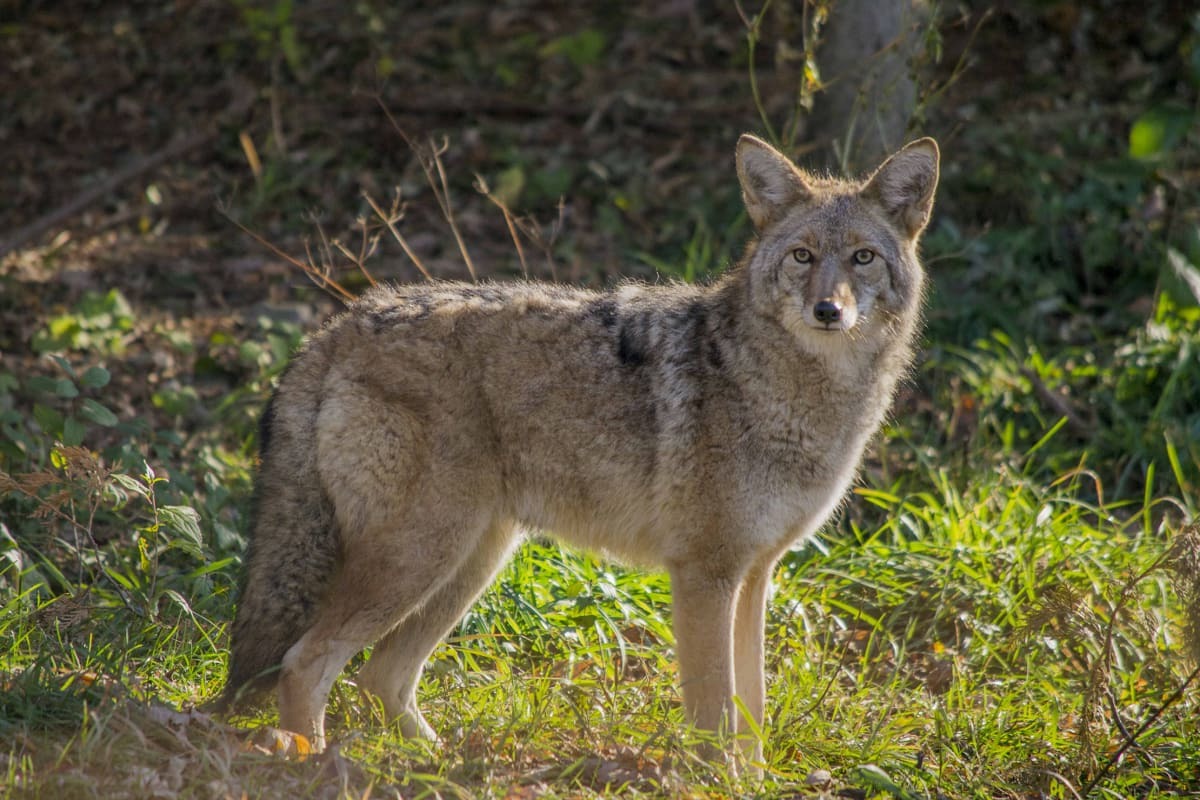
Ever wondered about the mysterious lives of coyotes? These clever creatures are full of surprises and facts that might just blow your mind. Coyotes are not just your average wild animals; they have a rich history, fascinating behaviors, and an incredible ability to adapt to almost any environment. From their unique vocalizations to their unexpected diet, there's so much more to learn about these intriguing animals. Whether you're an animal lover, a trivia buff, or just curious, get ready to be amazed by these 20 coyote facts you probably didn't know. So, why not dive into the world of coyotes and discover what makes them such remarkable survivors?
Key Takeaways:
- Coyotes are clever survivors, living in diverse habitats and communicating through howls and yips. They eat everything from rodents to fruits, showing their intelligence and adaptability.
- Despite challenges, coyotes continue to thrive and play a crucial role in balancing ecosystems. They inspire art and mythology, symbolizing the untamed wilderness and the importance of coexisting with wildlife.
Understanding Coyotes: Basic Facts
Coyotes, often shrouded in mystery and intrigue, are fascinating creatures that roam vast stretches of the Americas. These adaptable animals have a knack for survival, thriving in diverse habitats from dense forests to urban sprawls. Let's unravel some of the lesser-known facts about these cunning canines.
-
Coyotes are members of the Canidae family, which also includes dogs, wolves, and foxes. This family connection explains their dog-like appearance and behaviors.
-
Unlike some of their relatives, coyotes have a remarkable ability to adapt to various environments, including cities. This adaptability has allowed them to spread far and wide.
-
Coyotes typically weigh between 20 to 50 pounds, making them smaller than wolves but larger than most foxes. Their size can vary significantly depending on their habitat.
Coyote Communication and Diet
Coyotes are not just solitary hunters; they have complex social structures and communication methods.
-
These animals use a variety of vocalizations to communicate, including howls, yips, and barks. Their howl, which can be heard over long distances, is often used to keep in touch with pack members or to ward off rivals.
-
Coyotes are omnivores, meaning they eat both meat and plants. Their diet is incredibly diverse, ranging from rodents and rabbits to fruits and vegetables.
-
Interestingly, coyotes have been observed hunting in pairs or small groups to take down larger prey, such as deer. This cooperative hunting strategy shows their intelligence and adaptability.
Coyote Reproduction and Lifespan
Reproduction plays a significant role in the coyote's survival and expansion across territories.
-
Coyotes are monogamous, typically forming pairs that mate for life. This lifelong partnership aids in the rearing of pups and territorial defense.
-
A female coyote's gestation period lasts about 63 days, after which she gives birth to a litter ranging from three to twelve pups. The size of the litter can depend on factors like the mother's age and the availability of food.
-
In the wild, coyotes can live up to 14 years, though most live around 6 to 8 years. In urban environments, their lifespan is often shorter due to threats like vehicles and human conflict.
Coyotes and Human Interaction
As coyotes have expanded into urban areas, their interactions with humans have increased, leading to a mix of fascination and conflict.
-
Coyotes play a crucial role in ecosystem balance by controlling rodent and rabbit populations. This natural pest control benefits human agricultural and garden ventures.
-
However, coyotes can also pose challenges, especially in urban areas where they might prey on pets or rummage through garbage. Such behaviors often lead to conflicts with humans.
-
Educational programs and wildlife management strategies are being implemented in many areas to promote coexistence between humans and coyotes. These efforts aim to reduce conflicts while respecting the coyote's role in nature.
Coyotes in Culture and Mythology
Coyotes hold a significant place in the folklore and mythology of various Indigenous peoples across North America.
-
In many stories, the coyote is portrayed as a trickster, a clever and cunning character who uses wit to overcome obstacles and enemies. This portrayal reflects the animal's adaptability and intelligence.
-
Coyotes are also seen as symbols of survival and adaptability, embodying the spirit of the wild and the ability to thrive in challenging conditions.
-
Today, the coyote continues to inspire artists, writers, and filmmakers, serving as a symbol of the untamed wilderness that still exists amidst our modern world.
Coyotes: The Ultimate Survivors
-
Coyotes have expanded their range across North America, from Central America to the northern reaches of Canada. This expansion showcases their incredible adaptability and resilience.
-
Despite facing habitat loss, hunting, and other threats, coyote populations continue to grow. Their ability to thrive in a variety of environments, from deserts to forests to urban areas, is a testament to their survival skills.
-
Coyotes have a unique place in the ecosystem, acting as both predator and prey. This dual role helps maintain the balance of various animal populations and the health of their habitats.
-
Research on coyotes has contributed to our understanding of wildlife adaptation to urban environments. Studies have shown how coyotes navigate cities, avoid humans, and find food, providing insights into urban wildlife behavior.
-
Finally, coyotes remind us of the importance of biodiversity and the interconnectedness of all living things. Their presence challenges us to find ways to live harmoniously with wildlife, respecting the natural world even as we build and expand our own habitats.
A Final Peek at Coyote Mysteries
Coyotes, those cunning creatures of the wild, have always danced on the edges of human awareness, blending myth with reality. We've journeyed through a landscape dotted with surprising facts, from their incredible adaptability to their unexpected vocal talents. Coyotes aren't just survivors; they're masters of reinvention, thriving in deserts, forests, and even urban jungles. Their social dynamics, diet, and behaviors reveal a complex picture far removed from the simplistic pest label often thrust upon them. Understanding these animals better can foster coexistence and appreciation for their role in ecosystems. So, next time you hear a coyote's call in the distance, remember, it's not just a howl. It's a song of adaptability, family, and survival. Coyotes, in their essence, are a testament to nature's resilience and ingenuity.
Frequently Asked Questions
Was this page helpful?
Our commitment to delivering trustworthy and engaging content is at the heart of what we do. Each fact on our site is contributed by real users like you, bringing a wealth of diverse insights and information. To ensure the highest standards of accuracy and reliability, our dedicated editors meticulously review each submission. This process guarantees that the facts we share are not only fascinating but also credible. Trust in our commitment to quality and authenticity as you explore and learn with us.


